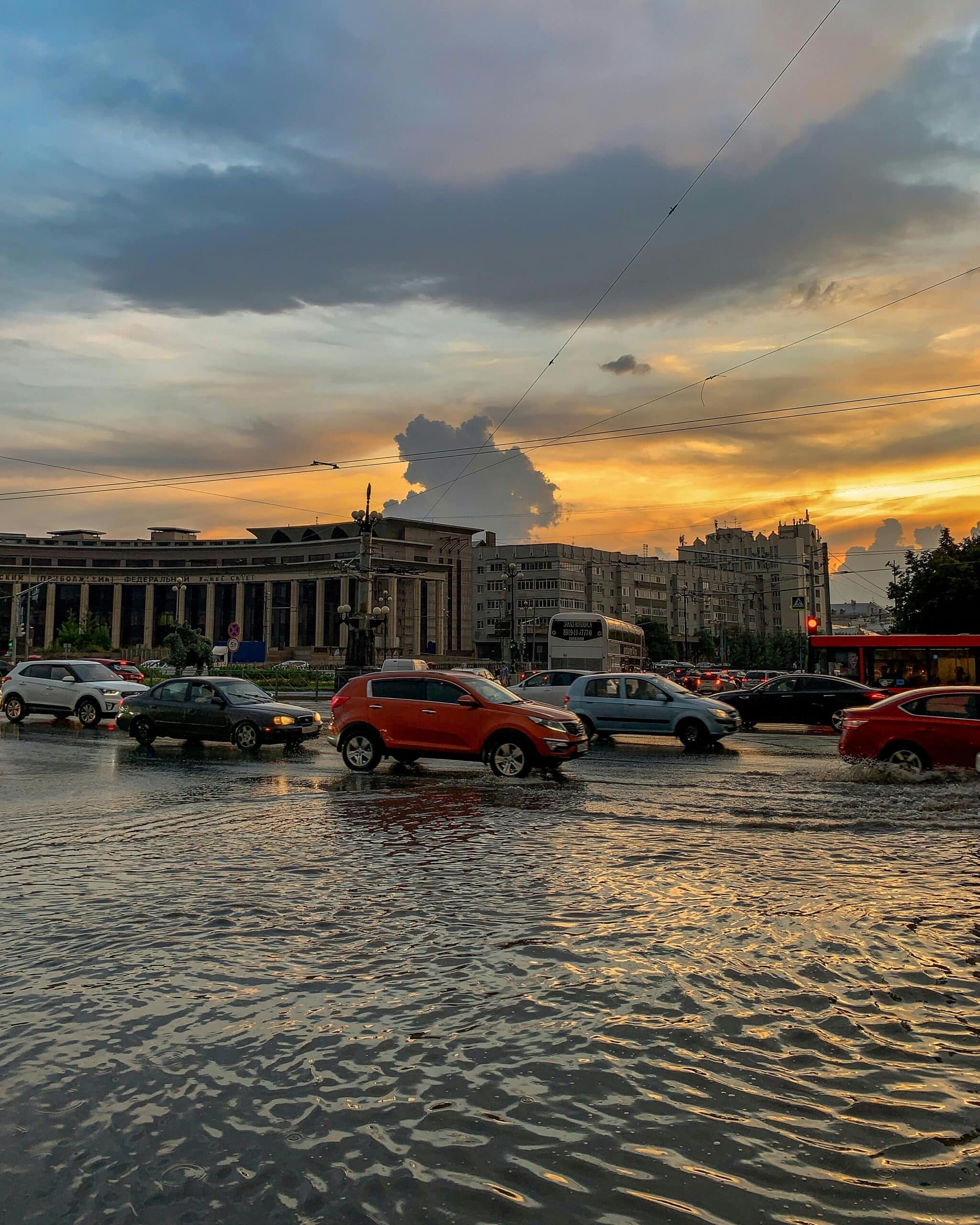
When heavy rains hit, streets can quickly become rivers. As tempting as it might be to plow through a flooded road, driving through these waters is risky and can lead to significant damage to your vehicle, not to mention endanger your safety. Here’s why you should always avoid driving through flooded areas:
1. Water is Deceptive
What looks like a shallow puddle can quickly turn into a deep pool. Water levels on roads can be deceptive, and it’s difficult to gauge depth, especially when the water is murky or moving fast. There’s also no way to tell the condition of the road underneath. Flood waters can wash away the underlying road surface, creating hidden sinkholes and road collapses.
2. Risk of Hydroplaning
Even a small amount of water can lead to hydroplaning, where your vehicle loses traction and begins to slide uncontrollably. This is because a layer of water between the tires and the road surface can prevent the tires from making direct contact with the road. Losing control of your vehicle, even for a few seconds, can result in severe accidents.
3. Engine Damage
One of the most costly risks of driving through flood waters is hydro-locking your engine. This occurs when water is sucked into the engine through the air intake and causes the engine to stall and, in some cases, irreversibly damage internal components. The cost of repairing or replacing an engine can be astronomical compared to the cost of avoiding a flooded road.
4. Electrical System Failure
Modern vehicles are equipped with sophisticated electronic systems that are highly sensitive to water. Driving through floods can cause critical systems like brakes, power steering, and electrical wiring to fail. This not only necessitates expensive repairs but can also lead to dangerous situations if these systems fail while driving.
5. Contaminated Waters
Floodwaters are rarely just water; they often contain mud, debris, chemicals, and waste that can be harmful to your vehicle. These contaminants can degrade your car’s mechanical systems and exterior finishes. Furthermore, the health risks associated with coming into contact with these contaminants should not be underestimated.
6. Legal and Insurance Implications
Many insurance policies have specific clauses regarding damage caused by driving through floods. Such damages might not be covered under standard policies, leading to significant out-of-pocket expenses. Moreover, in some jurisdictions, drivers who pass through flooded roads can be fined if they need to be rescued or cause additional emergencies.
Conclusion
The risks associated with driving through flooded areas far outweigh the potential benefits. It’s always safer and more prudent to find an alternate route. Remember, it only takes about six inches of water to reach the bottom of most passenger cars, leading to loss of control and potential stalling. About a foot of water can float many vehicles, and two feet of rushing water can sweep away even SUVs and trucks.
At Anyplace Auto Repair, we’re committed to helping you keep your vehicle safe and well-maintained. Avoid taking risks during floods, and always opt for the safest path, not just for your car, but for your safety. If you encounter any issues or need assistance with your vehicle after encountering water, our mobile repair service is here to help, offering convenient and expert care right where you are. Stay safe and steer clear of flooded roads!
Check out our previous post: DIY Car Care Tips for Summer: Simple Maintenance Checks You Can Do at Home to Keep Your Car Running Smoothly.
Proudly powered by WordPress


Leave a Reply